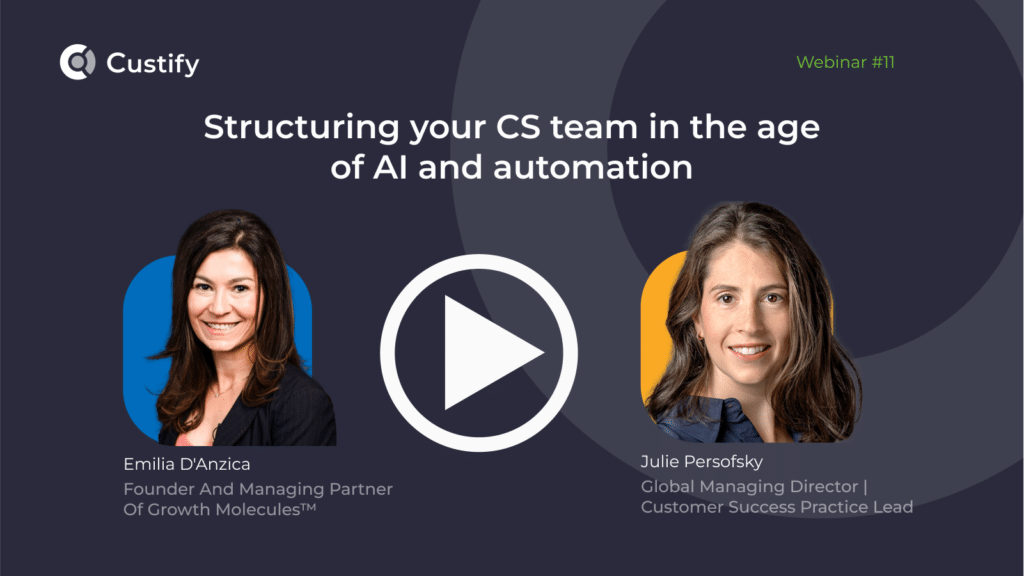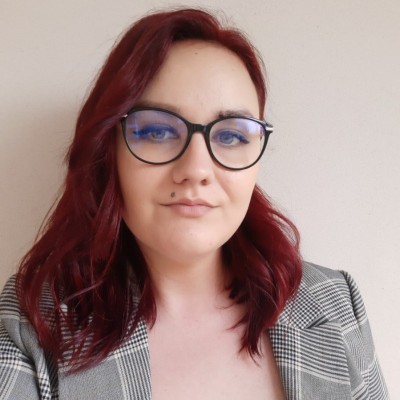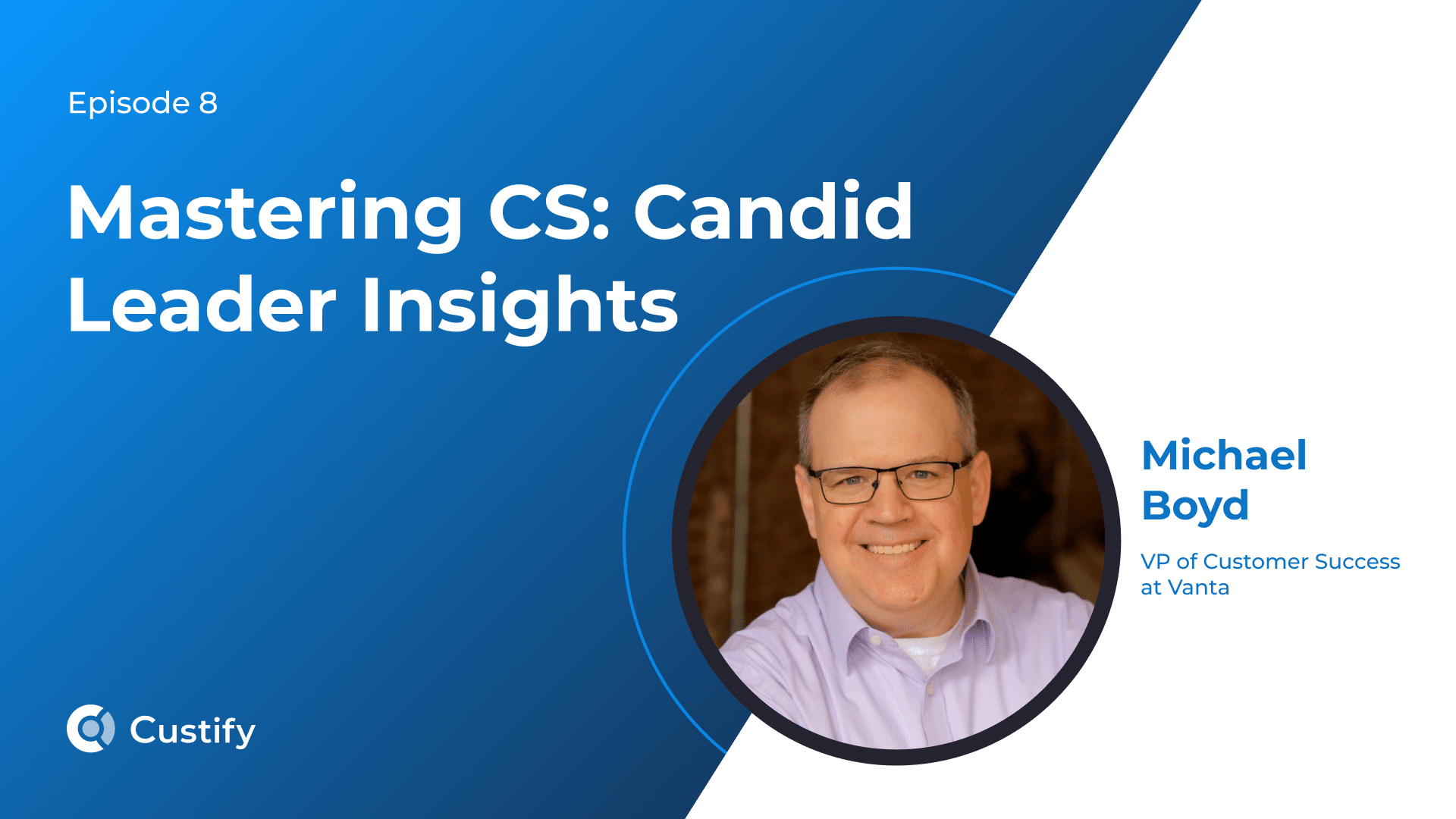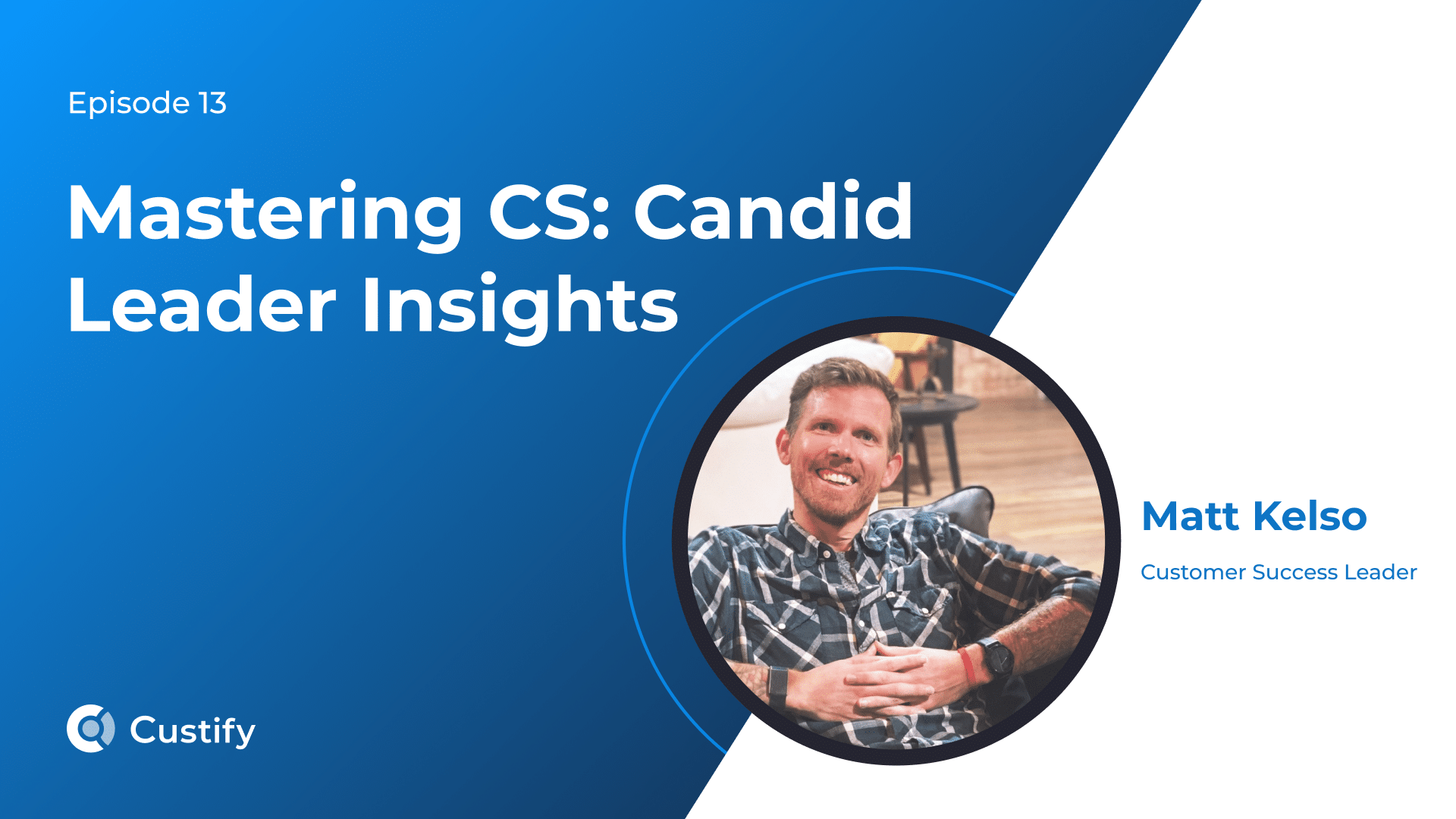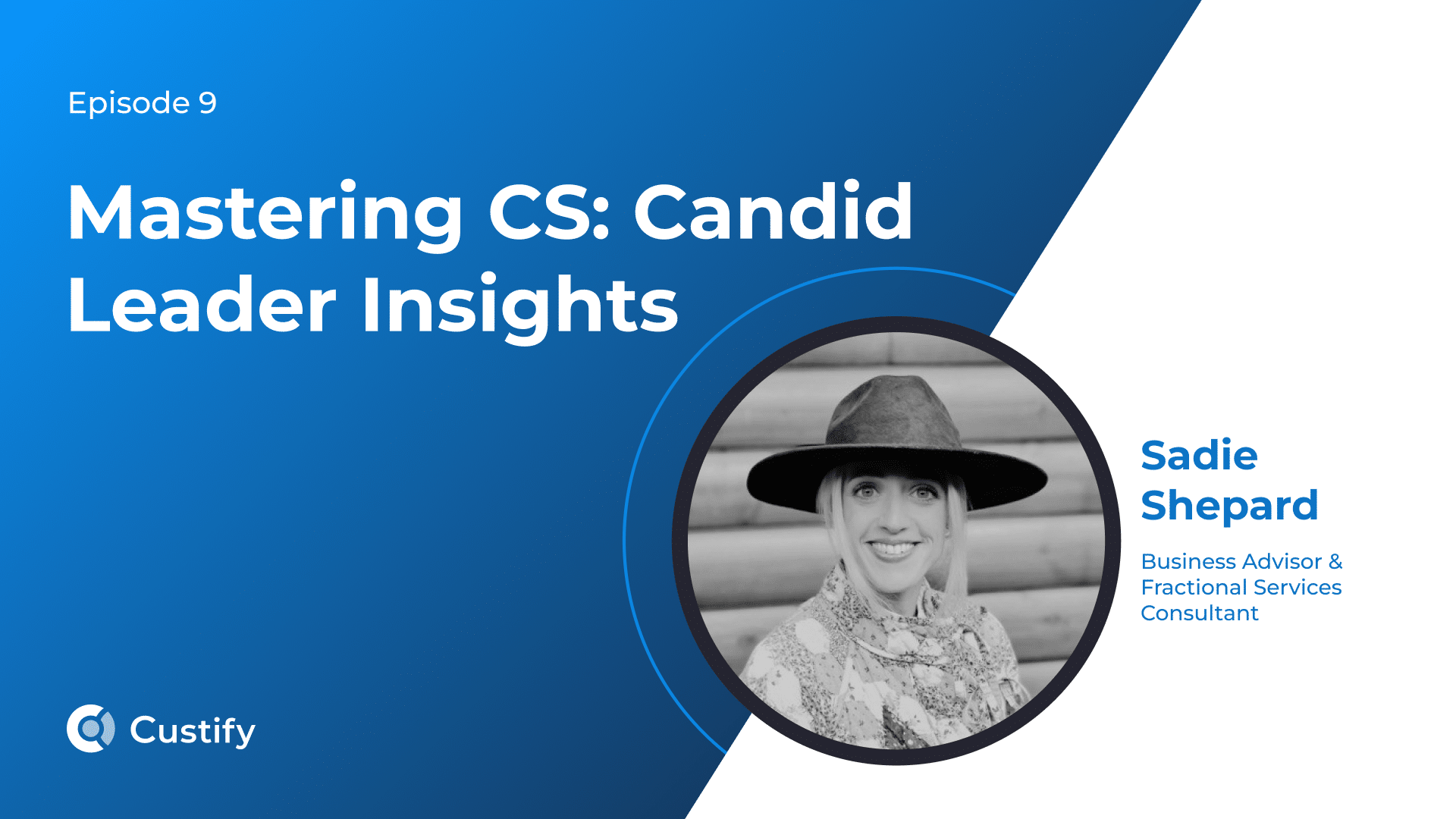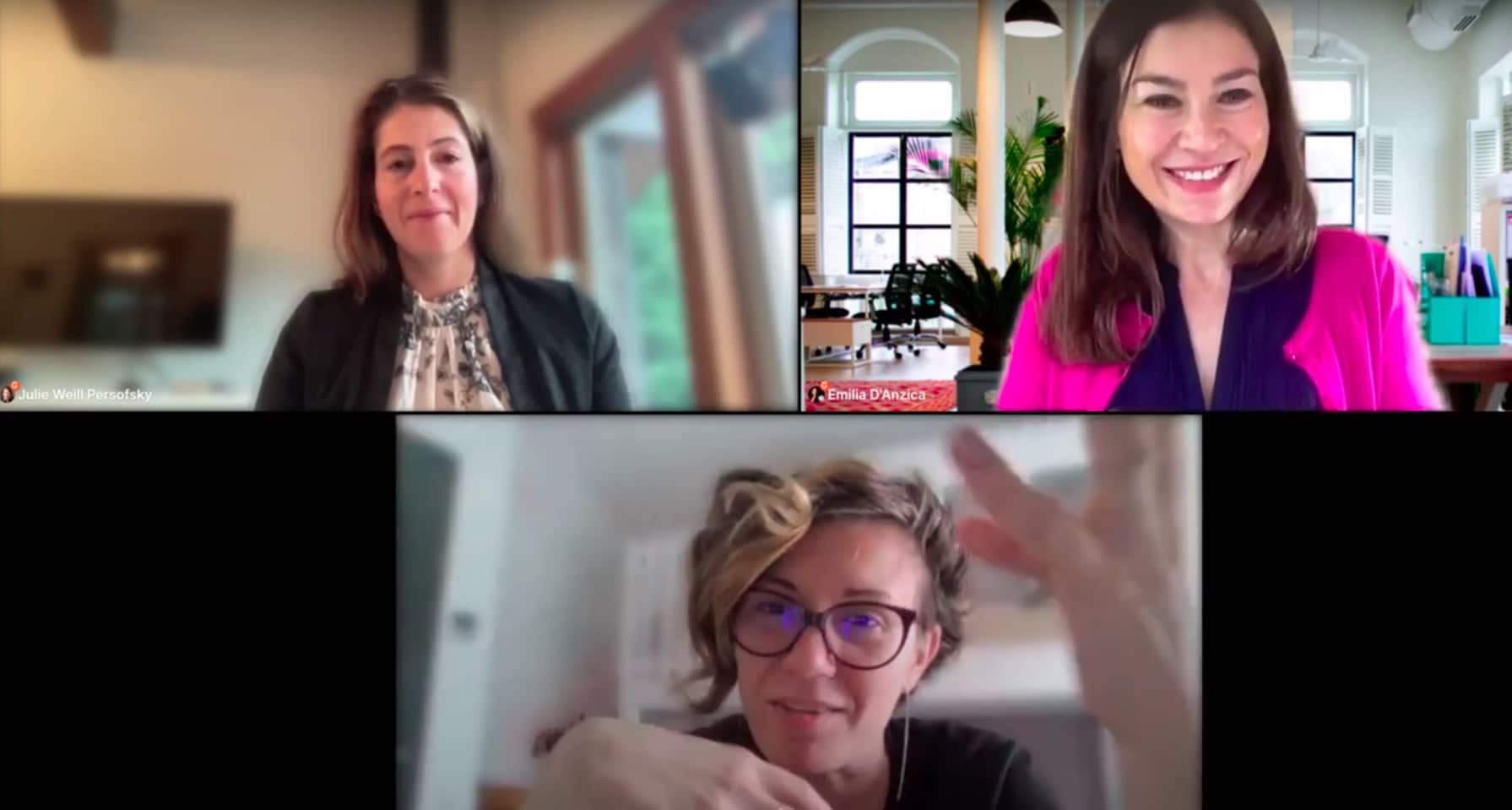Artificial intelligence is a hot topic nowadays because of its growing popularity in various industries. In this webinar, we’ve discussed with Emilia D’Anzika, Founder and Managing Partner of Growth Molecules, and Julie Weill Persoffski, a respected go-to-market growth advisor.
Read on to discover what insights we’ve uncovered on the following topics:
- Growth in PLG versus sales-led companies
- Structuring the Customer Success Team
- AI and automation in CS
Intro
Irina 0:00
Good morning or afternoon depending on where you are joining us from!
Welcome to the anniversary edition of our webinar series! A year has passed since we started this journey and it was one hell of a journey. I’m Irina Cismas and I’m Head of Marketing at Custify. I’m gonna be your host for the next hour. Today I’m joined by Emilia D’Anzika, Founder and Managing Partner of Growth Molecules, and Julie Weill Persoffski, a respected go-to-market growth advisor.
Emilia, and Julie, it’s a pleasure to have you both on board!
Irina 0:37
Today’s topic has its roots in a comment made by Irit Eizips in the last webinar, she noticed the importance of aligning CS and go-to-market strategy, a point that I resonated with a lot in my own past experience in a PLG company. So here we are ready to explore how sales-led and PLG organizations shape their CS and the impact of AI and automation on these structures.
Irina 1:42
Until we get started I suggest we wait also for the later joiners and while we wait, like always, I’m gonna publish a poll and invite you all to vote. And we’re gonna set the foundation for the discussion of today and I want to ask you, which is your go-to-market strategy for the ones who are joining us live today we have a lot of people.
Irina 2:50
Okay, so I think it’s more sales-led. We have 67% Sales-Lead, 28% product-led, 10% land and expand, and 3% other.
Sales-led versus Product-led growth
Irina 3:12
Now that we also saw the distribution and see how things are distributed for today’s talk, Julie, Emilia, could each of you share your experience with both sales-led organizations and PLG and how you see the approach to CS differing in this in these models?
Emilia 3:30
Go ahead.
Julie 3:40
Product-led growth has taken on many different forms over my career. It started with freemium, which, frankly, is a terrible name. So I’m glad we’ve shifted to product-led growth, way sexier of a topic and way more intriguing.
But sales-led, I’m not surprised by the results, right? Product-led growth is really time and place. So you know, sales-led growth tends to be the norm, the easiest thing to fall into, it’s rooted in history.
Whereas product-led growth, you really need the right product at the right price, and then the right impact that drives the right need and a little bit of that virality of your product in order to create the demand and the ability to adopt, the ability to convert interest into actual paying customers and get them to grow within that within just the product in and of itself.
So we don’t see that many product-led growth companies succeeding to date, lots of companies trying it, and lots of companies that are doing both. And frankly, I find that when they’re doing both, Emilia, I’m sure you I don’t know how you feel. But basically, they’re succeeding more in sales, like growth, and really need to adopt and really understand how product growth fits in with their go-to-market strategy.
You can’t just decide to be product-led growth and do it. And the same thing on the Customer Success side. You can’t just say, “Okay, now we’re going to be customer-led growth or product-led customer growth.” I find even with PLG companies, there are still a lot of companies out there doing customer-success-led growth of existing accounts versus product-led expansion.
What do you think, Emilia?
Emilia 5:27
Yeah, I wholeheartedly agree. But I will just start with a few things from my experience. I’ve predominantly spent the majority of my 20-plus years in more of a customer-led growth, through relationships, expansion, opportunities, really understanding the customer journey, and where there are touchpoints to have conversations to add more seats, be introduced to other departments, that type of growth model.
However, a few years ago I also led a product-led growth company with about 20,000 customers. And what I will see they didn’t do well. There was a struggle with product-led growth because they didn’t understand the customer’s journey. They made it easy to buy the product online, but then they made it nearly impossible to cancel or get support. And as a result, the NPS score was incredibly low. And the customer satisfaction, what people were seeing in the marketplace about them when we weren’t in the room was terrible, frankly. And so product-led growth has to be very intentional.
One of the biggest points of friction is too many companies say they have product-led growth, but the product team isn’t talking to the customer or understanding truly what that customer experiences. Now, I will say there are plenty of companies out there that do understand it and are doing it well.
Our team is currently working with a company that has 600,000 customers, very much a product-led growth company and now they’re starting to dive into the more enterprise, applying customer success to the larger clients. It’s been a really interesting journey. What they did really well is understand the customer from the product-led growth experience first and then start applying customer success. I think that’s a better strategy from my experience having lived in both worlds.
Customer success in PLG and Sales-led companies
Irina 7:35
How does the structure of the CS team differ? If you are talking PLG or sales-led. What are some fundamental differences in terms of CS approaches between the two models?
Emilia 7:54
I think the fundamental difference from my experiences, there is no customer success. The leadership often believes that the product is self-explanatory and that you don’t need a customer team. For the majority of the clients, the customer success team is really only applied to the most complex enterprise clients out there.
Whereas Customer Success-led companies or sales-led focus on a more white glove experience, and then automation and digitization are applied on top of that.
Julie 8:40
Yeah, I think it’s also just, the structure in terms of the accounts that you manage. I think if you’re going to be in a more, you called it a white glove service, which everyone can sort of picture in their minds is a great term for the enterprise clients, ones you really want to handle through the experience, that’s going to be your one to few accounts.
When we’re looking at a product-led growth organization and transferring that over to customer success product-led growth, you mentioned 600,000 customers is something you’re working with, right?
You’re gonna have ratios at that point. And so, the product is taking that on, and then you have the people there, analyzing the data, the customer success role then becomes analyzing the data, identifying the moments that matter, those key impact moments, and making sure that I like to think about customer success, similar to a sales funnel, right?
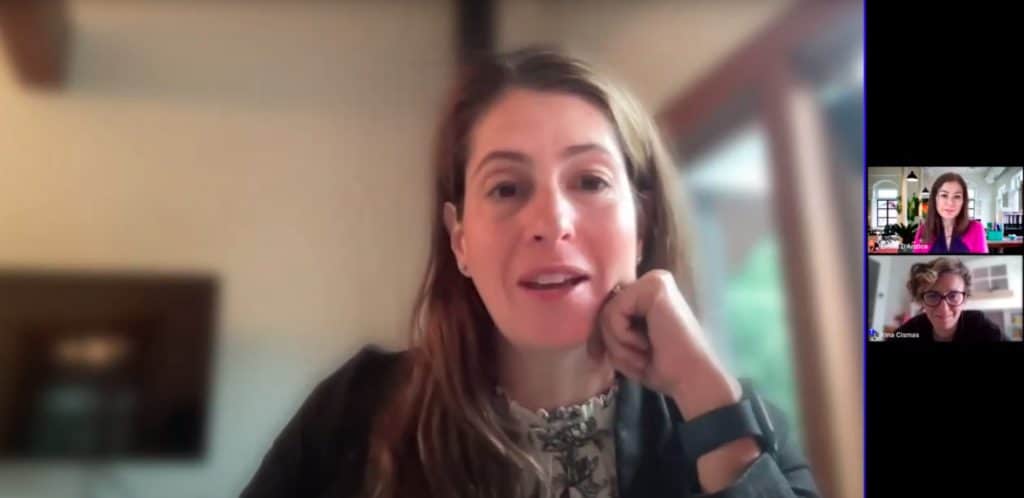
We very much understand how we think through the conversion of new leads. Customer success, you can think through the exact same way and that that model works really well in the world or PLG. Because everyone’s just running through a funnel onboarding, okay, what are the steps? What are the steps and stages that your customers need to go through onboarding? Track those and see where customers are getting stuck, see where it’s taking too long, and be able to adjust for that.
So it’s very efficient, it’s very machine-learning and data-driven, which makes it in some ways a lot easier. Because oftentimes, when you’re managing with that white glove, that one too few models, everyone’s doing their own thing, everyone’s just your reactive potentially, I often speak with managers who have no clue what their team is doing on a day-to-day basis.
Whereas with this model, you can really understand, but you have to have the data, it has to be clean has to be accurate. And you have to be tracking those moments and understand what the different conversion rates seem with expansion. How do we get customers to flow through and adopt new product lines to increase their users? What does that piece look like?
Segmentation in customer success
Irina 10:53
Do you think that factors like the company’s size, the industry, or different types of customer segments influence the way you build your CS organization? And let’s try to give some examples of how you paint a picture of a CS team structure in a startup and how does this structure evolve, while the team grows to 30 or 100? How, what changes in the way you fundamentally structure your CS function?
Julie 11:30
So I’ll jump in here. Because I’ve worked with a lot of startups, I’ve been the first non-technical hire at a lot of organizations, and I work with a lot of companies going through that transition of a couple of people in CS, going to many and the biggest challenges when at an early stage, you’re people are doing everything. And that makes a lot of sense, right?
If you think about those three main phases of the customer success journey, you’re onboarding, you’re getting adoption and retention, you’re growing, chances are your CS team, each individual is doing everything, they’re assigned a couple of clients, and they’re managing it all.
But that doesn’t scale, right? That’s impossible to scale. And so as you add on more and more people, you start to segment out both functionality. So you have people focused on onboarding or adoption, you have people focusing on retention, and maybe even account management teams focusing on expansion.
And then within those accounts, you’re also going to segment based on the size of your customer, so enterprise, then market, SMB, and the different ratios and the different motions that the team is going to be taking. The very exciting part about growing and scaling a company is constantly changing the makeup of your CS organization and how it’s structured to meet the new needs and the demands of both your team, but then also everything you mentioned, like your customers, right?
How I would interact with a customer in the FinTech segment will be different from how I would work with someone in the restaurant tech industry because the sophistication and the approach and just lens of the customer are going to be very different and so understanding the persona I think that’s a common misconception, where in sales, we often do personas or marketing.
But in customer success, we also need to do persona. So we understand how to best work with our customers. So we’re segmenting our customers based on their size and their industry, and we’re segmenting our organizations, but also not too much at the start, right? So many companies are like, Oh, okay, I have like a couple of CS people, how should I be thinking about segmenting, it’s like, do you at all? Monitor it, manage it, and track what you’re doing, so that way you can scale it when the time comes.
Emilia 13:59
Yeah, I’ll just add besides geography, also, culture is very different, I think of customer success when I’ve been to Brazil versus customer success in a place like Israel in Tel Aviv, or, versus what we’re used to in the United States, although Julie and I are both Canadian, and I would argue yet another experience there.
So applying the cultural element, the expectations of the product, and then aligning. Is it more alignment with the sales team with that seamless handoff? Are you willing to invest in enabling your sales and customer success managers to work together for common metrics that you’re you’re striving to achieve? Or is it more aligned with product where the end goal is as little friction as possible, but at the same time as little communication outside of in-application, so the chat, real-time guidance within the application, very different motions, and how you measure it?
I think as well, the complexity of your product, which you mentioned, will absolutely determine whether you need a robust customer success team. I think I can’t remember the CEO’s name, who said Snowflake didn’t need Customer Success management. I’ve been in many implementation projects with clients who have been working on integrations between something like Snowflake and a customer success platform. And you need technical Customer Success applications or people to apply and integrate these systems.
So I really believe it starts at the top, what do you want to achieve? How are you going to achieve the metrics that Northstar that you’ve set out for the organization? And then how complex is your product? Who is your audience? Where do they live? All of those elements will determine if PLG is even feasible.
Irina 16:07
Emilia, I never thought of the cultural differences, if any, if I say that in other aspects. And now I’m curious because you mentioned that the CS, a setup in Israel would be different than in a Canadian company or in a Brazilian company. You have experience in multiple countries. How does this how does this change?
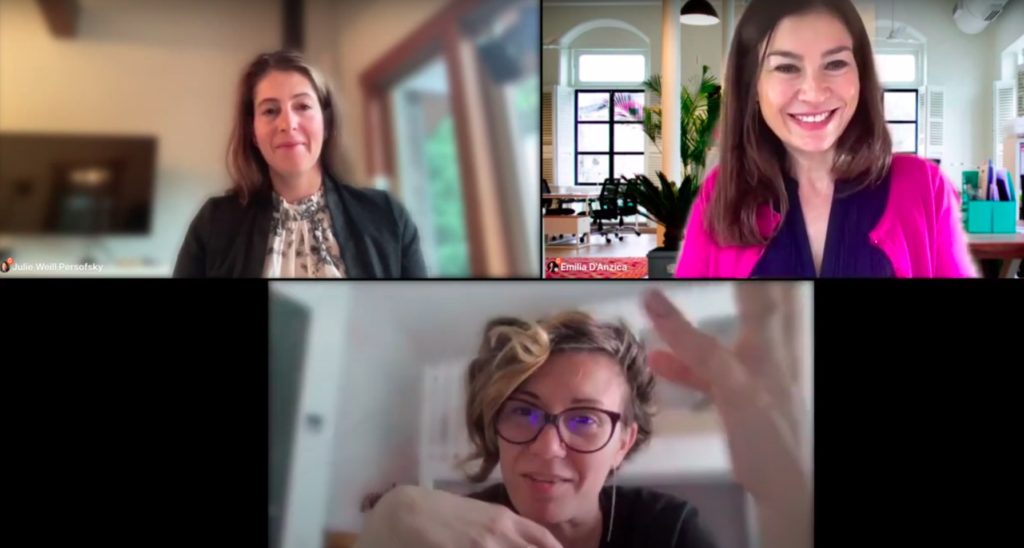
Emilia 16:40
This has nothing to do with PLG or sales-led. I will say when I flew to Tel Aviv to interview and hire team members, people showed up in flip-flops and shorts, and T-shirts. And I thought, oh my god, I can’t put these people in front of customers. This is not professional. This doesn’t look professional. But it was a cultural bias I was applying to a cultural norm there. It’s okay if you wear shorts and T-shirts to an interview in Tel Aviv in the startup world. Whereas in Canada where I grew up, when I went to interviews I wear more of a suit, I would not Oh, first of all, it’s too cold to wear flip-flops and shorts. Even in May right now it’s raining and cold in Kelowna.
But I would argue, understanding who your audience is and what they think is important. When I was setting up a team in San Francisco, we were serving companies like MasterCard and Amazon and the Head of Sales Enablement called me and said, “You’ve applied the CSM to our organization to lead a very important implementation of the product. I don’t feel comfortable working with this person. He just joined your company and look at his picture.”
People will judge you on that. And so right away we hired a photographer and had the CSM photographed for LinkedIn to have a more professional approach to customer success. Now, I argue he was the best CSM on our team, but maybe holding up a beer and dressing super casual, didn’t fit with the norm of MasterCard, they wanted someone who looked more polished. And so really understanding your audience should influence how you interact with them and meeting them at least halfway.
Julie 18:40
I was just going to add that I did a lot of work with UberEATS. And it was so fascinating when we started expanding and working with the different countries, so when we I got coached when we started interacting with the team from Japan on how to actually introduce someone and speak to someone so even just saying the things before their names, or after their name was a shining sign of respect, and not saying that was a sign of disrespect. And so and saying certain things, also using different forms of technology. In Hong Kong, it was very common to use WhatsApp with customers and video would not be something that would be well received. Whereas in North America, we are starting to adopt video as a form of communication. So there are all these different cultural things to think about and understand your audience when communicating with customers, as you expand to different geographies.
Irina 19:49
We have a question from Louisa. And since it’s in the context of what we discussed, I’m gonna push it live now.
Aligning with other teams
Irina 20:00
What if a team of one customer success manager works in a product-led company? How can there be better alignment between the different teams?
Irina 20:10
Julie, want to pick this one?
Julie 20:15
Sure. So what if a team of just one person works in a PLG? I mean, that’s the easiest if it’s one person because there’s less coordination between all the other people.
Communication is the thing that we often don’t do the most. And I’ll bring up the fact that we’re Canadian because I think it’s really interesting. I am Canadian, but I actually started my career in New York. And so I got some sharp elbows pretty quickly out of the gate and learned how to speak very directly. And then when I came back to Canada and I worked at Eloqua.
Six months into the job, we got a new CEO, and we got an American CEO about five months into his job at working at the company, he called the whole company together, and he said, “We need to fight more. You know, I don’t want you just standing and swearing at each other and swinging punches, but I want you to argue more.”
And because we have this culture in our organization of being just too nice. And so you and that broke down a lot of the communications between the different teams and we didn’t challenge the team enough water to grow map would come out, and instead of the customer success team saying “Hang on a second, this isn’t what we’re looking for, this isn’t what the customers are saying, or even better, this isn’t what the data is showing”.
So opening up that communication. And, being not forceful, but showing the data showing the proof, to open up that dialogue and have a really healthy discussion around where things aren’t aligned, or what we need to be doing to better serve the customer is really, really valuable. And the thing that most companies don’t do enough of is having product team members, whether they’re developers or product managers join customer calls.
And so even with product-led growth, you still want to get on calls, you still want to speak to the customers hear directly from them, and do a variety of different surveys. And you know, especially in PLG you have a lot more insights and you could see the customers doing things so getting together as a group and asking why is this happening and maybe even going and watching customers do it and use the product.
You don’t just take the data at the surface but actually understand why this is happening to better drive alignment with your customers. Is really helpful and just don’t be afraid to get on a meeting and have that conversation.
Emilia 22:48
I’ll add two tips if I may.
Not enough companies are enabling their team members. As you go into your profession, regardless of where you are, you may be taught something and then you use it a few times.
It may not be reinforced if you slip into your old habits, ensuring that you set up a framework for your organization early on that teaches your organization that it’s okay to have friction.I call them crunchy conversations. But to do it in a respectful way, in a framework where people don’t feel attacked, because when you feel attacked, then you shut down, and suddenly creativity disappears. So it’s really important to say, It’s okay to have crunchy conversations, but we do it with respect.
And here’s the framework we can consider. And one of the best books I’ve read. I went into the Israeli culture very much from a Canadian perspective, a more British upbringing, and felt very attacked in my first few months and didn’t know if I would survive.
I did three-plus years. But I will see Radical Candor by Kim Scott was one of the most influential books in my career, and I recommend it to everyone, especially if your company has a book club, you read a chapter a month, something like that can really help you align and set up a framework for difficult conversations in a way that’s healthy.
Julie 24:30
One of our developers in our product team, actually, you know, I just said: “Hey, what’s the best way to communicate with you? How do you like to receive feedback?” And, you know, they thought about it for a while. And then they came back to me and said: “We don’t want you to tell us the answer. I don’t want you to say to us, hey, we need this in our product, or our customers are asking for this. We’d rather you pose it as a problem and allow us to come up with a solution.” And that worked really well for them.
What I found is that didn’t transfer really well to other organizations where I would say, hey, you know, pose the challenge, and I’d provide some data, but they wanted more collaboration. And so nothing really beats saying, I’ve had this experience with the team, right, one of the first things I asked my team members is how do you like to receive feedback? “What’s the best way for me to communicate with you?”
And so just spreading that around to other team members and understanding how you like to receive feedback, and how you like to have open conversations? You know, for me, I really respect the Israeli way, I worked with a head of product who was Israeli, and he and I got along incredibly well. But it didn’t work great for the rest of the product team. Right. Because of that, you know, the difference in the communication styles.
Oh, yes, Richard, Crucial Confrontations. I have it on my bookshelf. It’s also fantastic.
Transitioning from Sales-led to Product-led
Irina 25:53
Emilia, we have a question and I think that’s for you. I’m in a sales-led company transitioning into a product-led company, what’s the key to transitioning current customers used to personalized interactions with the customer success executive into a more automized service?
Emilia 26:16
Yeah, I would see if you’re transitioning to product-led, do it thoughtfully. And understand, again, I’ll say it again, the customer journey, and what’s changing in it. Why are we going from sales to product? What are the current gaps? How are we going to fill them with either product enhancements, or applying an application on top of it. There are so many today, in application that can help customers where there are strong friction points.
By 2030, the workforce will not have my generation necessarily as the majority rather, it’s Gen Y and Z. They communicate very differently. Trying to get my teenage daughters to pick up the phone is impossible. I have to reach them on social media, or take away their phones to you know, turn off all apps. So really understanding your client and why are you going to this new strategy and having a strong communication plan for your customers will first of all notify your company.
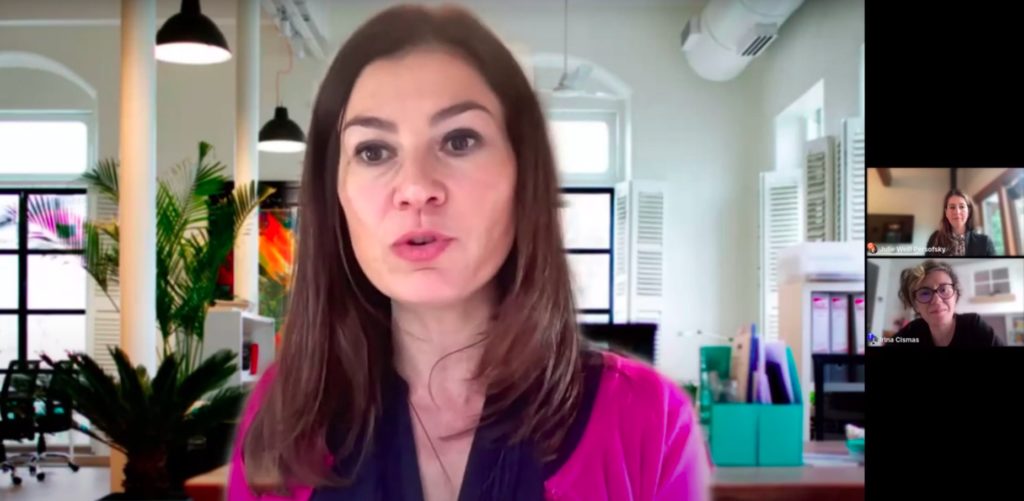
I had a major product update when I was the vice president of engagement at one of the companies I worked for and the head of product put out a release without notifying the CS teams. Our WhatsApp went nuts. Because no one knew what was happening and I didn’t know how to answer the customers. I didn’t know what to tell support. I’m calling the product leader who’s in another country. Yes, he did get fired soon afterward. It was one of the biggest disasters so if you are going to make massive changes, you need to communicate and train your team and then you need to communicate proactively with customers in advance. I would argue five times send five communication messages, have webinars, or anything that’s massively changed.
The customer wants to know what’s in it for me, why are you doing this? To me? I like the way things are right now. So over communication is key.
Julie 28:40
Yeah, you bought up a big thing that I love. You said that was why are you doing this? And I think it’s a good point to ask yourselves as to why you’re doing this. If you’re doing it just for cost savings, is that the right reason?
If you’re doing it to create a better experience for your customers? Well, that’s a really great reason. And so you just want to make sure that you don’t minimize the customer experience. If they’re used to personalized interaction, they like that. What is it about that personalized interaction that they’re getting? Are they getting too much?
So a lot of the times when we started off, we do everything for our customers. And actually, that’s not the best thing, that’s definitely not the best thing for you as an organization. But it’s not the best thing for you as a company or for your customers, because they don’t learn how to use the product themselves. So can you replace some of that through using the product and getting better training and adoption, that’s definitely something that is amazing for that customer experience.
But oftentimes, what I’ll see in sales-led organizations shifting to product-led, is that they miss things, and then the customer doesn’t get as good of an experience and then you’re gonna create that dreaded churn, right?
And so it’s some of it might just happen, right?
But as Emilia said, mapping out those key moments, where impact is happening for your customers, and creating your product-led growth strategy to hit on every single one of those moments is incredible when done right. But take your time with it, really map it out, test it out with some early adopters, and make sure it’s there. Because once you go full-on, it’s hard to scale back at that point.
Irina 30:22
I really liked that both of you mentioned some things that are happening “Okay, we have to adapt on the cultural part and what also the next generations of CS are changing, and what we used to do, I don’t know, five years ago, is no longer I would say, available, or it’s adapted on channels on different types of communications.” And that basically brings me to the next question that I want to address.
AI and Automation in Customer Success
What is the impact of I will say, technology, but I’m more into AI and automation on the roles within the CS team? And how do we ensure that the CS team is prepared for the changes brought about by the technology? How do we embrace it?
Julie 31:12
I was just at an event last week with a bunch of AI organizations and AI experts. And what I loved about what they said was that AI has been around for a really long time, it’s just been made a lot more accessible to the every day, right?
It’s no longer only available to people who are really sophisticated in technology or developers, it’s available to us, right, we can just tap on and try it out. So I think it’s really a really exciting time. But also if you look, there’s always been tools that have been able to create efficiencies. And I think the biggest challenge that we have when we adopt new technologies is using them effectively and testing it, right? But it’s such an incredible way.
If you’re gonna write an email at scale, and you want to adjust it many times over to make it more personalized, that could take hours of work for an individual, you can leverage technology to make that more efficient. That’s incredible. And so playing around with encouraging people to play around with technology, tracking what’s working, what’s not working, but also figuring out and having a goal in mind. Right?
So what’s the purpose of using this technology? Is it to create more efficiency? Is it to help you scale? Is it to give you more personalized and customized interactions without drowning your organization with a lot of work?
So using that type of technology to create efficiencies and tracking it and adopting it as we’re adapting to what the results show, it’s exciting. I actually have to say I’m seeing this as a really exciting time because there is so much technology at our fingertips. But I think a lot of people are still really scared by it. If people are scared that it’s going to replace their jobs, which is nonsense. It just makes us better at our jobs. And you know, a great CSM with some powerful technology that can help us scale be more effective, be more specific and track our work better and analyze the data. I think it’s going to do incredible things for the world of CS in the next decade.
Emilia 33:24
Yeah, I will agree. And since I just presented on this with my colleague, Sabina Pons, I have some great stats on this. First of all, it’s here to stay, it’s not going away. Investment in AI last year was 18 times more than in 2013. So it’s, it’s not going away.
The other thing is, AI tech is expected to grow by 200 billion by 2026. So companies are paying attention to it. If you’re not, I can’t help but want to roll my eyes. I was on another webinar a few weeks back, and it was focused on how to leverage ChatGPT for customer success. And someone wrote in, I don’t have time in my job to even use GPT I think it’s wasting even more time, kind of held back at the swipe. But I just thought, well, you, I’m glad you’re here, I’m glad you’re going to learn how it actually can help you.
One, it’s going to help you architect your customer journey maps so much faster, you’re going to be able to see information better. Also, it will automate communication through the many different Omni channels. I just think of how many different gadgets I have around me, my iPhone, my watch, my other screen, my computer, my iPad. There are many different ways to receive communication. And then thirdly, it enables customer autonomy. And it will enable a user or a company to move to digital, or product-led growth so much faster.
And then lastly, it solicits customer feedback. I think Julie and I will agree, NPS was very much created for b2c products. And while boards still pay attention to it in B2B organizations, it’s not used correctly, because it’s not enough to ask what do you think of the product in the moment. You might be really upset with an experience you just had, but tell me more, tell me more across the entire journey. Why do you feel this way?
So digital touch is here to stay. And if you leverage it in a way to benefit your organization, you can move to digital or product lead strategy much faster.
Irina 35:58
You mentioned ChatGPT and I also wanted to ask you, if you use it, how do you use it, and which are your favorite prompts? So because I know that it is a debate. We also prepared an article about ChatGPT in CS. So now I have the chance to basically ask you how you use it.
Irina 36:24
You mentioned it, Emilia. Because you mentioned that you were in another webinar and a user mentioned that they don’t see the value. And actually, I’m not surprised because I was monitoring some Slack groups. And I noticed that there were not. It was not embraced the service and the technology.
Emilia 36:57
Yeah, so first of all, you have to take it with a skeptical eye. What I mean by that is don’t assume everything ChatGPT is telling you is correct. Also, depending on whoever they’re citing, go look at that additional information and find out what they mean. I mean, ChatGPT will give you very high-level information about your question or prompt as well. If you’re paying for the service, the expensive, the non-free version. One is so much faster and will give you more robust information. So I think that’s another consideration.
And lastly, I’m an adjunct professor at St. Mary’s College of California, it’s very much a hot topic that all the professors are talking about. It’s very simple to see if someone’s leveraged it and hasn’t put any thought into the answer.
So if you’re going to use use it, make it your voice, it’s very, very apparent if you’ve just copied and pasted it and I tell my teenagers this all the time as well. And, you know, some of the teachers are now forcing, instead of a written paper, you’re coming in class and you’re going to write your exam. I want to see what comes out of your brain not ChatGPT. So really making sure that you remember your own voice, even if you leverage it so that you can go faster is incredibly important.
Julie 38:28
Yeah, it’s a great research tool as well, right? I think a lot of us are so caught on the topic of, hey, write this for me, I think that’s really helpful. Take an email and edit it, that’s hugely helpful. Make this more custom to a specific persona. That’s great.
I also think we are constantly trying to be you’re jumping on a call with a client, summarize what does this company do? What is this view and who are their competitors, so getting some intelligence about that company, and actually, you if we can integrate that even into our tools, right?
So if you can integrate the AI information-gathering about that company to get a good summary of that product, about what they do, who their competitors are, if they’ve done different raises, if people have changed jobs, there’s so much information to be an amazing person in sales or customer success.
Understanding who our customers are takes a lot of time and work and effort, the best ones do great if we, but if we can use technology to make it really efficient for us, you know, we can be so much more powerful in our jobs and not spend all the time we need to do doing all of our research.
So customizing our communication is so important, and not enough people do it. And that’s a really powerful way to do it. And I’m just playing, I’m just getting started. You know, I love using it to create project plans. I’m starting my own company, and I quickly was like, hey, draft a legal contract for me just to see what it came up with. It’s amazing for templates, you know, taking that, you know, hey, this is where and the first draft was you gave me even some questions?
Well, it depends on where you’re from, and where you’re servicing that gave me some really great things to think about to adjust and modify. I don’t love so far my experience with design. I don’t know, if you’ve had experience working with some of the PowerPoint, I thought maybe a new logo would be a fun way. But I didn’t love that. So I’m going the traditional route of working with designers. So you know, I think also, it has its time and its place.
Leveraging AI for better customer insights
Irina 40:39
I’m gonna take another question. So a question from David:
How have you used AI to develop better customer insights from qualitative customer feedback?
Emilia, do you wanna pick this one?
Emilia 40:59
Sure. So I think leveraging and aggregating the data, and then looking at the outliers, and who are the outliers? And then what is the majority, you can create heat maps with AI. So really understanding where are the biggest friction points or if it’s maybe the outliers a huge brand. What are they saying?
As well, for patterns, right, you want to look at patterns, you can look at this type of information by cohort, maybe a big release in your product happened in a particular quarter, and being able to look at that data by cohort faster is incredibly powerful.
I think the biggest pain point when I was a Chief Customer Officer, was trying to work with our head of growth and being so dependent on him for data, just I was he was dependent on Clary, and then aggregating and grouping that information together. And here I’m sitting, waiting, and I’ve got a board breathing down my back for the information.
Hopefully, Customer Success platforms will be able to do this a lot faster. For leaders in customer success. That’s what I’m most excited about. Because that was one of my biggest pain points. We had a CSP in place and it was not the answer to help me to be able to do my job better. So I think that’s where AI is going to come in very powerfully as being able to look at patterns, group data, and then give you insights on how to mitigate the challenges.
Adopting automation and AI
Irina 42:45
Another question from Luisa: What advice would you give a startup with a limited budget but with a full-time customer success manager to adopt more automation and AI when processes are still being out together and there is little team alignment? Julie, it’s coming from a PLG.
Julie 43:11
I’m just gonna say: get alignment. That’s the first thing I would say. That’s the most important thing. You can’t move forward if you don’t have the right alignment. And there are different ways to get alignment. Understanding where that friction is and why people don’t know why that alignment is not happening, and sometimes you have to disagree but commit to the action.
So not everyone has to agree with what’s happening. But you do need to all agree on a path forward. And so I think that’s really the best way to move forward.
Irina 43:50
From Richard: In my last position at Talkdesk, CCAC Company, our AI-powered solutions were sometimes met with slight pushback from lower-level decision makers in our customer base, because they were worried about the impact on their contact center teams, headcount reductions due to AI. Any thoughts?
Emilia 44:19
Yeah, I would start with the “why?”. Really understand they’re worried about headcount reduction, due to AI really diving deeper and looking at the data together. I think a customer success manager’s role is to educate and through education, you’re persuading.
So instead of just giving an answer or rolling your eyes or making faces that show that how can you not understand you know, what’s wrong with you really show that you’re genuinely curious and understanding their fears. Remember, as humans, we are selfish, we are afraid of losing our jobs of change, of losing our team, we want to look like a hero to our organization, and we want to hit our metrics to get our bonus. All of these selfish traits about human beings result in a CSMs role of understanding, why are you afraid? Let me help you change this story so that you still look like a hero so that the fears can dissipate. That would be my initial answer is diving in deeper and building the relationship.
Julie 45:36
And what about giving them a little bit more of that power and creativity? So, hey, we’re not trying to reduce headcount, we’re trying to make it easier for you. You’ve already shared with us some challenges that you’ve had in your ability to bring up some of the things and I’m sure there are a bunch of challenges that they’ve had in their job. And so what if you could leverage technology to do these things? And go more exploratory with them?
How could we do this better? Or what if we had a tool that could do this, this, and this, let’s not think about reduction, right? Ease their minds and make it more about, imagining what this world could look like. Or what your role could look like, if we could do that. And let’s go sky’s the limit. Let’s get creative and whiteboarding. Make them part of that decision-making and that creative thinking around how you can adopt this technology as opposed to pushing it down on them.
Irina 46:30
Another question. I’m also very careful when it comes to timing. So I’m not going by the initial questions that we discussed. This question is for Emilia.
Measuring customer sentiment
If NPS is not used correctly in B2B, how do you suggest we measure customer sentiment or use it better with a metric that can be compared across works?
Emilia 46:59
Yeah, thank you for asking that question! I just met with the CEO of a company yesterday. The company has just been launched in January. It’s called Robota. I hope I’m saying it right. But we had a very rich conversation about NPS. And I think because I teach customer marketing at St. Mary’s, I inevitably have to talk about NPS and its flaws. And NPS was created by the CEO of a car company, a car rental company, to understand the sentiment of the driver’s experience, through the interactions of renting the cars.
It went on to be picked up and made into this big thing at Harvard. And since then, now it’s been adopted by B2B companies. The issue with NPS is it’s one question 0 to 10. And it assumes someone at a seven or at a five and not given moment is very unhappy with your product. But it was maybe something bad happened at work or they’re stuck in a particular moment in your product and they can’t move forward and this thing pops up with NPS and suddenly they push zero.
So how do you get around that:
- Having that additional box Tell Me More?
- Being very intentional by segmenting your surveys?
Your Chief Finance Officer has very different goals than a CSM. Why are you asking them the same question? Once you’ve aggregated all the data, I would also argue that you need to actually auction it. Too many companies gather data about their customers and then don’t do anything with it. I worked with a very large organization we did a survey across 56,000 customers. And I gathered the data. interviewed 100 of them quite in-depth, and then presented it to the leadership of this organization. And then I asked them at the end, what are you going to do with the data? And there was a silence in the room?
Why don’t you just pay me all this money to understand the voice of the customer like, this is just the beginning, gathering customer sentiment, you have to understand what is the sentiment across the journey, where the friction points and opportunities to expand, and then action it and it should all be on the head of customer marketing or CS, products should be involved engineering, how you’re marketing to the different personas.
Julie mentioned earlier that the personas you’re marketing to are very different than the personas who are leveraging your product day to day. So you can do so much with customer data if you actually take the time to ask the right questions, and then act on it.
Julie 49:55
I’m just jumping in for a minute because this is a topic that I’m extremely passionate about. Because, as you said, it originated for a brand, and more of it was a purpose that was to see how your brand compared against other brands with things like Pepsi Cola versus Coca Cola and your brands that would with consumer brands with 1000s upon 1000s of survey results where you could really get a fair survey and accurate survey data.
The huge challenge in the world of B2B is we’re not surveying enough people. Let’s say we’re sending it out to a couple hundred. When you’re looking at a survey like NPS it’s one of the biggest flaws in it. And in general, yes, it can be influenced by your day. But the same thing with the original sentiment score, it can always be influenced, which is why you need the numbers you need mass numbers in order to get an accurate score.
I stopped a company from launching NPS because they said what are you going to do with this data and they had no plan. And so if you don’t have a plan, you actually run the risk of really damaging what’s happening in your organization, how your customers feel about you. Because if they respond in a negative way, and you don’t respond appropriately, that’s a terrible customer experience.
What I find works better, because I think that’s always the question. Everyone knows that NPS is flawed. They use it but everyone’s searching for a different metric. And so what I love now about the era that we’re entering in, with so much more ability to track and have AI tools and have different tools, track what’s actually happening. And so I see a world in which we shift completely away from NPS, and we start focusing on what’s actually happening in your organization.
So looking at metrics, like, let’s just look at the retention metrics, right? Obviously, everyone’s tracking retention, and we’re tracking expansion. Are we tracking adoption metrics? Are we tracking? Who’s using multiple product lines? Are you expanding?
People using your product is a better tell than people responding to a survey, obviously, and then we want to dig into that, right? So if you gather the group of customers who aren’t using your product, effectively understand from there, how you can make it better.
So customizing a survey to make it relevant. Did you know about this product? Have you started using this product? What’s blocking you from getting more adoption?
And so I think it’s really important to look at the actual metrics of what’s happening in your product and how customers are using it and stop worrying about a score that frankly is used to compare brands against other brands because it doesn’t tell you enough about your business.
Splitting customer success and customer service
Irina 53:08
Thank you for the addition! We still have one question and I want to make sure that we get the answer:
So when do you think is a good time to split CS and customer service?
Julie, do you want to take this?
Julie 53:30
If by customer service you mean support, I would generally say I like to separate them pretty early on. It’s really important for customer success managers to be strategic, almost like a strategic consultant in your organization. And if they start doing support, they’re going to always be at the “support user” action level, and it will be hard to elevate them.
If we’re thinking about your onboarding, customer success, and that whole engagement and customer journey, then I like to keep it as the same role, unless it’s a very technical onboarding. I like to keep it together as long as we plan and then split them once it starts to limit the scalability of our business, because it really helps create an incredible customer journey, as long as possible.
Emilia 54:29
Yeah, I’ll just add: Most companies start with a Support reactive and eventually, end up with a Relationship Manager. Typically you are in support when you start, even if they call you a Customer Success Manager, you are really a Support Manager at the beginning until you have some processes and playbooks in place.
Irina 54:53
You already talked about some data about how things will gonna evolve. What are the skills that CSMs need to level up in the context of AI automation, and technology? How can we try to make sure that we are on par with the way the industry is changing?
Emilia 55:34
Have a growth mindset! You have to be open to change and be okay with being uncomfortable trying new things that might not necessarily feel the way you’ve always done things. I think that is your biggest asset or way to succeed in your career because our world is changing so fast, and there’s so much data being consumed. If you’re stuck in your ways, or you’re not continuously learning, you’re going to quickly fall behind in this new world.
Julie 56:10
Be curious and ask questions. Never leave a conversation with a question that you still have about something, whether it’s a conversation with a customer or a conversation with your manager, or your product team. If you’re curious, if you’re like “Why are they doing this?” “Or how can we better leverage this?” Ask the question and engage in that conversation and just be really curious about what’s to come and how you can jump on the tech bandwagon or the tech one array of what’s happening today.
Automated playbooks
Irina 56:42
We have one more question: Are there any playbooks that you can suggest?
I think she’s referring to playbooks in the role of AI and automation.
Emilia 57:22
I think if it’s product-led, it has to be a seamless handoff from sales to customer success, really understanding the client so they’re not repeating themselves. Going through the experience. The best example I can give you is to create a HubSpot account. It won’t let you even though it’s free without really understanding your persona and what role you’re in so that they can give you a more prescriptive customer journey. I think that’s a great example of automation and a playbook that you should understand as you’re building your own company, especially if it’s product-led or automated.
Julie 58:01
Yeah, there’s no generic playbook. I love that example. In general with CS and automation, the first thing is to map out those steps. What stages does your customer need to go through? What modes of impact do they need to achieve in order to successfully onboard? Then automate that, and then track it because you’re not gonna get it perfect the first time and figure out where those blockers are, and then improve on it. This stuff is hard, but it’s fun.
Irina 58:35
Having said that, it seems that we are near the end of our conversation. And first of all, I want to thank you both, Julie and Emilia, for joining me today and for all the insights that you shared. And I also want to extend a big thank you to all of you who joined us today, because your participation and input make webinars like this meaningful and impactful. And before I forgot, if any of you wake up in the middle of the night with that brilliant question you wish to have asked, don’t hesitate to get in touch with my colleagues or me.
We are just a chat or email away. I know that both Julie and Emilia are available also on LinkedIn. I invite you to connect with them and extend the conversation and ask questions. Stay tuned for our next webinar. I have more exciting discussions lined up for you and remember that the journey of customer success is a marathon. Thank you, everyone. Until next time, have an awesome day!
Do you have any topic requests you’d like us to cover in future webinars? Reach out to us and let us know.
